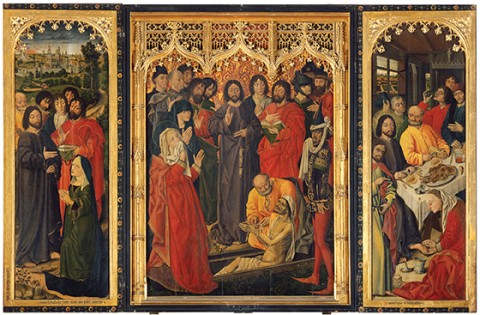Triptych of Lazarus, Martha, and Mary, by Nicholas Froment

The Resurrection of Lazarus, a triptych from 1461, is the earliest documented work by the French Renaissance artist Nicolas Froment. What is distinctive about it is the scene on the viewer’s right, in which Mary anoints Jesus’ feet as her brother, Lazarus, looks on (John 12:2–3). From the beginning of the interpretive tradition, Mary, sister of Martha and Lazarus, had been confused with Mary Magdalene and the anonymous woman who anointed Jesus in the home of Simon the Pharisee (Luke 7:36–50), a composite solidified in a sermon by Pope Gregory the Great near the end of the sixth century. As a result, most of the images of the anointing of Jesus in medieval, Renaissance, and Baroque art are set in Simon the Pharisee’s home and frequently carry iconographic elements associated with Mary Magdalene (portrayed with red hair and often in a prostitute’s attire). Here Froment presents a decorously dressed Mary, complete with head covering. Although there is apparent commotion among the onlookers in the background of the scene, the anointing itself is presented as a quiet and dignified act of devotion, in parallel with the opposite panel, which shows Martha, in nunlike attire, kneeling piously before Jesus in order to tell him her brother has died (John 11:32).





